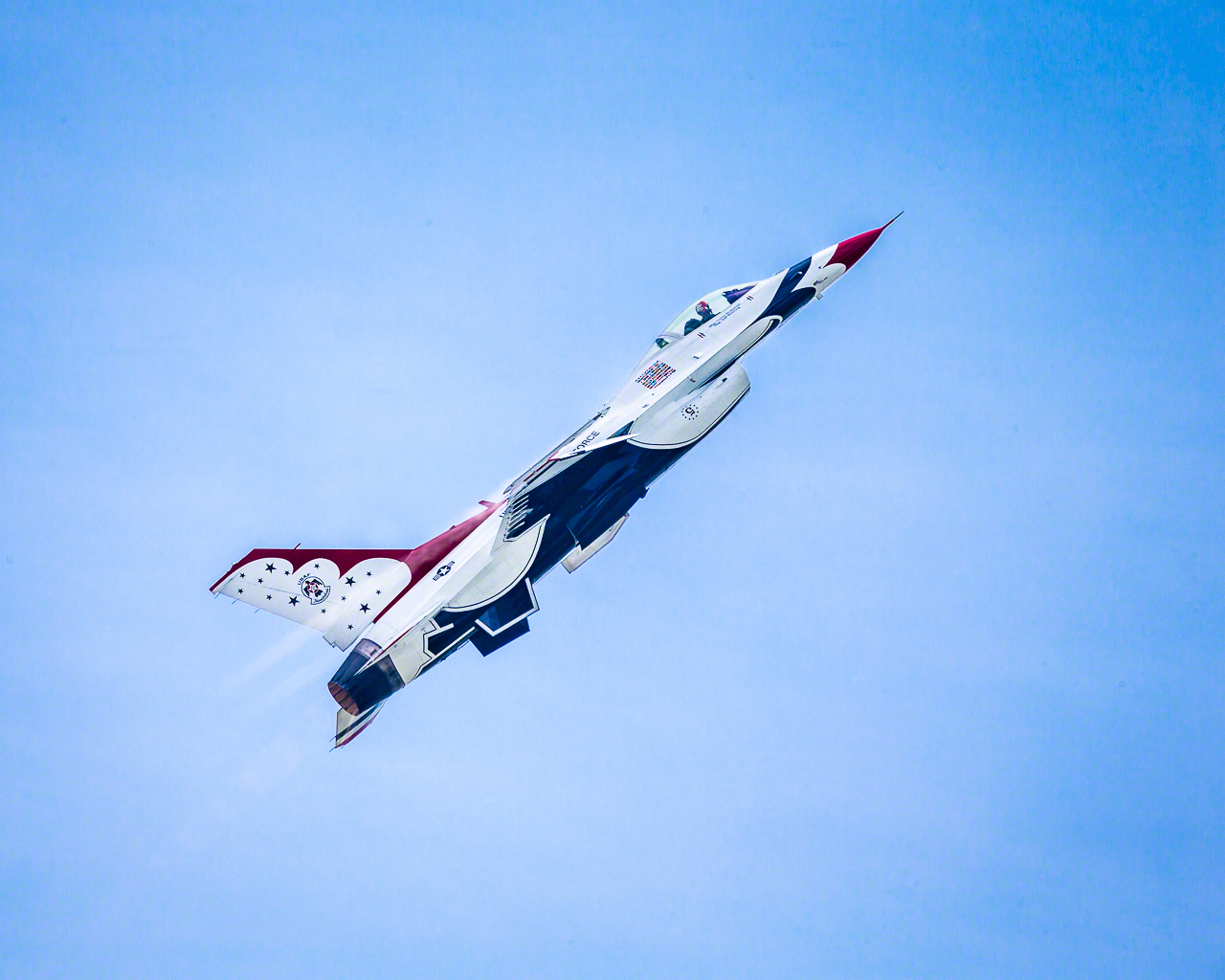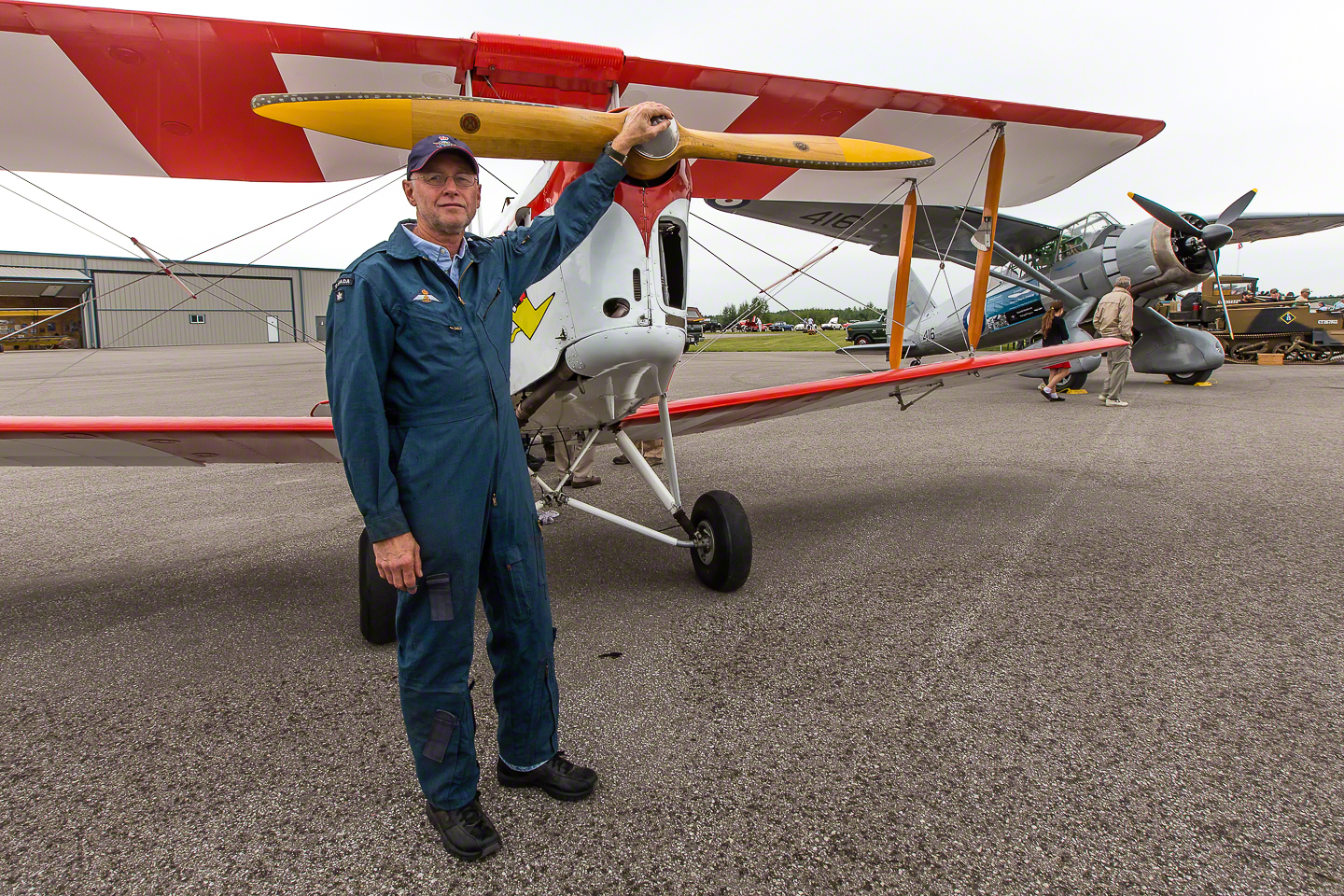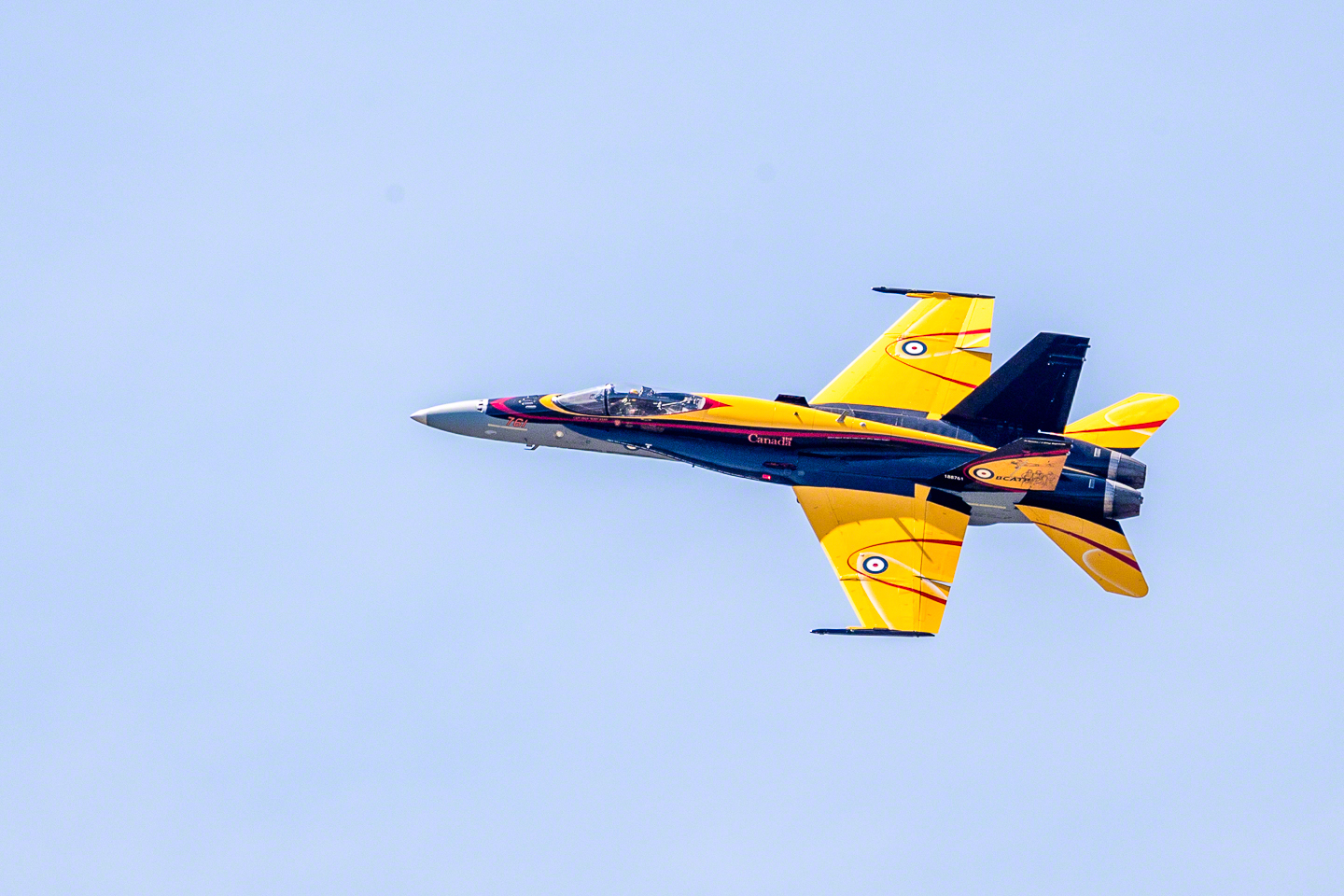Hope this is alright to post...just seemed so timely with the air shows coming up....from Henry's Camera Blog
 Tips for Photographing Air Shows
Tips for Photographing Air Shows
BY
ROSS CHEVALIER JUNE 29, 2018
ARTICLES,
GEAR,
QUICK TIPS
There are many opportunities to photograph aircraft over the course of the summer from big air shows to smaller, local events. Getting good shots at air shows is not hard, but some tips are going to help you out.
We will use different settings for different types of shots, but do work to keep your ISO as low as possible for the best colour and dynamic range.
Figure 1: USAF Thunderbird 5 on ascent: note the vapour trails at the tail
Statics
Ground display of the aircraft is called statics. You can get right up to the aircraft, sometimes even get in the aircraft and very often speak with the flight crew.
For statics, a medium wide-angle lens is great as cockpits are more cramped than you might expect. You can also step back and include the flight crew beside their aircraft; a more human type of story. Don’t forget to share a business card or take down an email address so you can send along a copy of a photo. To make an aircraft and crew seem more powerful, take shots from a low angle.
Figure 2: This gentleman is the proud owner of this classic biplane. He needs to be in the shot.
Try to watch for clutter in your background; it will save you time in post-processing removing a bunch of junk. That’s not cheating, and it will help you build your photo editing skills.
With statics, a macro or close shot with a telephoto zoom can help you isolate particular parts of the aircraft to complete your story. Consider mechanical parts, insignia, or aircraft names as opportunities for a wider story.
Figure 3: Standing back and filling the frame with interesting colours and mechanics
If you are going to be on the ground for some time, don’t forget your sunscreen as that concrete apron is much more reflective than you might think. A travel tripod or Platypod is a useful tool to have and if you are going to do a lot of low shots, a padded knee pad is a huge asset.
Don’t forget your flash for interiors.
Matrix metering and area focus can serve you well here.
Ground to Air
Ground to air refers to the shots that you make while the aircraft is aloft. There are some consistent things to consider.
First, determine if the sky is a lot brighter than the aircraft. If it is, you will want to add some exposure compensation to bring up the exposure on the aircraft if there is a lot of sky in the photo.
Second, bring as long a lens as you can handle. Filling the frame is really important as you give up a lot of quality and data if you have to crop in a lot. I tend to crop a bit loose in the viewfinder for recomposition. I have learned over the years that I want the aircraft occupying at least half the frame, unless I am going for an environmental shot, such as we see the Snowbirds do in close formation work or sky painting with smoke trails.
Figure 4: RCAF Hornet in Anniversary livery
All aircraft in flight are moving and we really want to show that movement. While we will naturally opt for higher shutter speeds to freeze action, we can get better shots if we have been practicing our panning techniques, so we get the sense of motion and less of a “model plane” feel. Remember to review your shots and use a loupe to check sharpness as you go. Also remember that the planes are pretty far away, so going for smaller apertures for more depth of field isn’t really going to make a lot of difference. Give yourself plenty of aperture so you can keep your ISO nice and low.
You are going to need long lenses for this kind of shot. A 400mm full-frame equivalent is about as short as you want to go.
Figure 5: U.S. Navy fighter on approach for landing
Dealing with Different Aircraft Types
Jet aircraft don’t really provide a lot of evidence that they are moving, so look for gestures such as a wingover or a steep ascent against a background. A slower shutter speed pan on takeoff or landing can really tell the story. If your lens is long enough, you will be able to see air movements over the wing surfaces and those are good to capture.
Propeller driven aircraft are easier to show motion with and may even fly closer to you. A good place to start is to get your shutter speed to 1/60 of a second and use good panning technique. This shutter speed will typically result in a nice full round blur of the propeller but it’s only going to show up well when the light is hitting the propeller dead on. Acrobatic aircraft may be spinning the propeller faster, so you may be able to raise your shutter speed as high as 1/125 of a second. Your goal should be a photo that does not look like a scale model hanging on fishing line in your room.
Helicopters are particularly tough. They bounce around a lot so a high enough shutter speed to freeze the helicopter also freezes the rotors. A shutter speed low enough to show rotor movement often results in a blurry helicopter. Something challenging to practice.
General Settings Guidance
I take my recommendations from what I have learned and from aviation pros such as the amazing Moose Peterson. Choose Shutter Speed Priority so you have direct control over your shutter speed. Choose as low an ISO as you can to maximize colour and dynamic range. Always use a polarizer, as planes are highly reflective. Monopods and tripods may prove more cumbersome than you might hope; practice your breathing and your hand-held technique. I personally recommend practicing on seagulls. They are everywhere and with a few crusts of bread, you will have practice subjects for a long time. To practice rapid changes in direction, use an orange peel. A single peel piece will be grabbed and dropped by a long progression of gulls giving you lots of practice time.
Keep your elbows tight against your body and make a lens cradle with your left hand, avoiding the “busted chicken wing” over-the-top lens hold.
Figure 6: Very old RCAF Vampire at Camp Borden
Shoot in continuous burst mode, but don’t spray and pray. Set your camera to continuous autofocus. Moose recommends area focus rather than spot or single point focus because in most cases, the aircraft is closer than the background and has more contrast. I used to shoot only single point and was surprised to see how effective this tip was when I tried it.
For statics, something in the 16–55mm range full-frame equivalent is a good choice as is the 70–200mm. For ground to air, the 100–400mm range is a good start, and adding a 1.4x teleconverter can be beneficial. There are really nice lenses from both Tamron and Sigma in the 150–600mm zoom range that work very well.
If you are not using a polarizer, a protective filter is a good idea because there’s a lot of debris being kicked up at an air show. Be sure to clean your camera at the end of the day as there is exhaust debris falling out of the sky all day long. Always use a lens hood; both for front end protection and also to control glare across the front element of the lens.
My To-Go Kit
I’m not suggesting that you need the same kit as I do, but this will give you an idea of what I will take along.
Canon EOS-1D X Mark II with
Canon 100–400mm L lens and
Canon 1.4x Extender with polarizer and lens hood fitted. This is my ground-to-air camera, although I can use it at the shorter focal length for statics.
Canon EOS 5DS with
Canon 16–35mm L lens with polarizer and lens hood fitted. This is my statics and interior camera. I also carry a
Profoto A1 flashthat I use with interiors and leverage its excellent TTL metering, so I am not taking the polarizer on and off all the time.
I will carry a couple of
LensPens as one always seems to vanish, a couple of
microfibre cloths to wipe down exteriors, a Platypod for ground level shots, and a remote cable. I carry spare
memory cards for each camera and one more battery for each camera than I think that I will need.
Conclusions
I really enjoy aviation photography and hope that you folks do as well. The approaches that I share work for me. You may have your own that are quite different. The important thing is to get out and shoot!
If you have questions about this subject or any other subject, please leave a comment below,
Until next time, peace.
Ross Chevalier
Ross has been a photographer for over four decades. He has worked as an apprentice, is a professional photographer, videographer and imaging educator. Ross leads workshops, seminars, photowalks and delivers customized mentoring programs. He is also an instructor with Henry’s Learning Lab. You can read more of his thoughts, read product reviews, watch videos and listen to the Make Better Photos and Videos podcast at
www.thephotovideoguy.ca.
1.4x Teleconverter 100-400mm 16-55mm 400mm Lens 70-200mm Air Shows Canon 1.4x Extender Canon 100-400mm L Lens Canon 16-35mm L Lens Canon EOS 5DS Canon EOS-1D X Mark II Ground to Air lenspen Polarizer Profoto A1 Flash Protective Filter Sigma 150–600mm Statics Tamron 150–600mm











